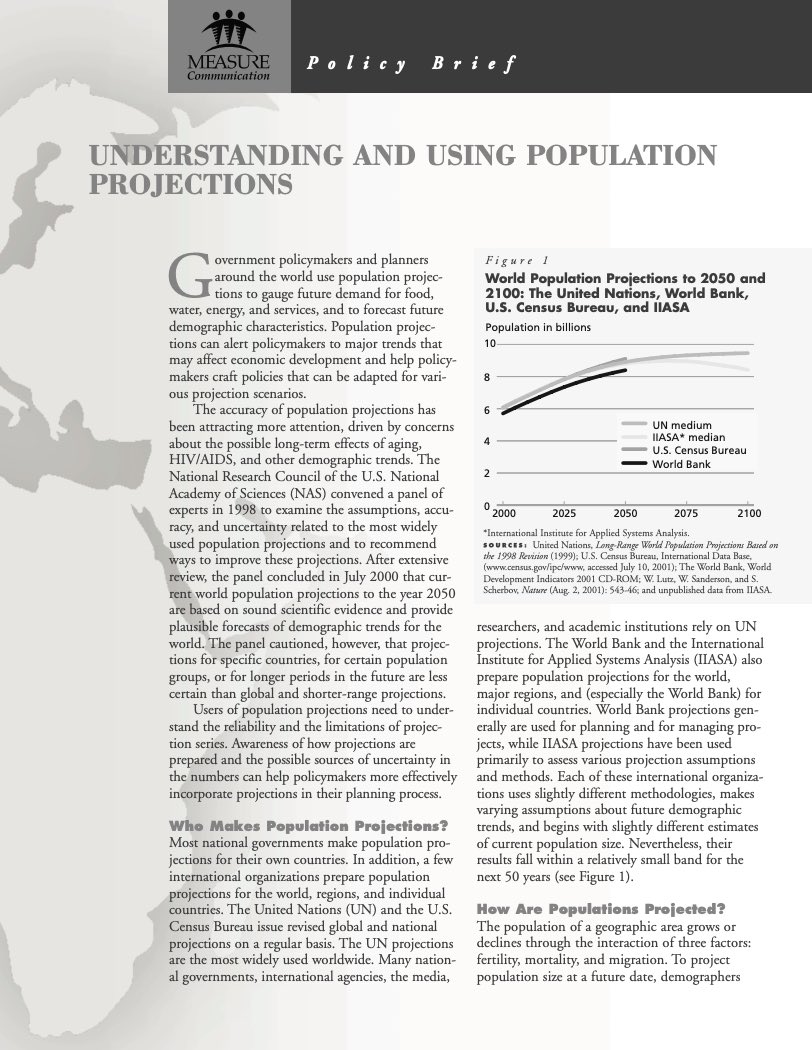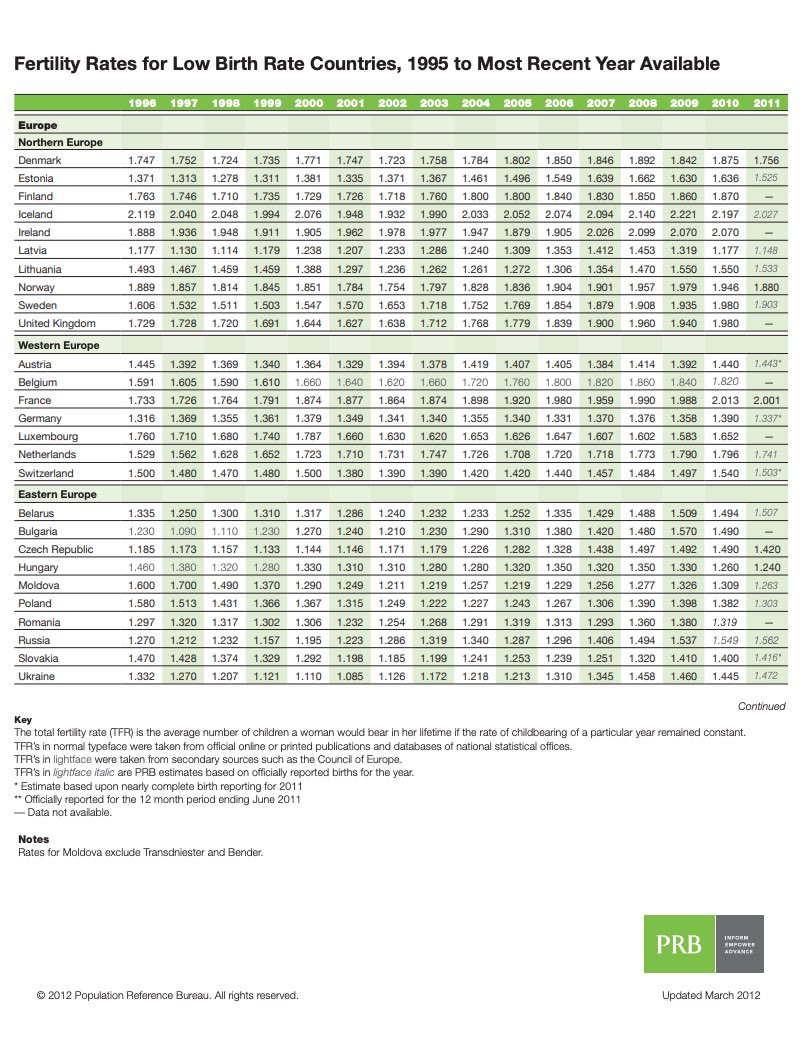Policy Brief: Understanding and Using Population Projections
Government policymakers and planners around the world use population projections to gauge future demand for food, water, energy, and services, and to forecast future demographic characteristics.




